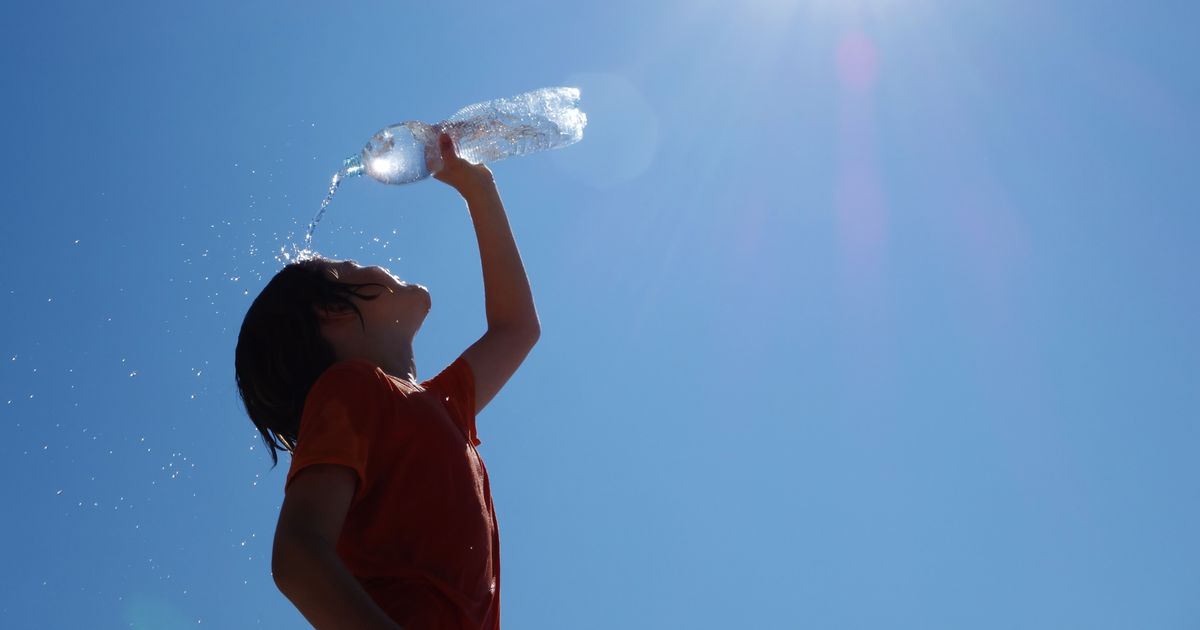News
Is Your Kid Dangerously Overheated? These Are The Red Flags To Watch For.
School is out, and the sun is blazing. This is great news for kids who are ready for days filled with popsicles and sprinklers, as well as for parents who are eager to send their kids outside to play. But when the temperature rises, kids are more susceptible to the harmful effects of the heat.
It’s important for parents to recognize the signs that a child is getting overheated and to take measures to keep kids safe.
What is heatstroke?
Heatstroke is clinically diagnosed when your body reaches a temperature of 104 degrees Fahrenheit (40 degrees Celsius) or higher. At these temperatures, organ damage can occur. Your body will actually stop sweating when it gets this hot, so you lose an important cooling mechanism. Your central nervous system is affected, causing symptoms such as confusion, delirium and seizures.
“Heatstroke is a severe, life-threatening condition,” Dr. Jen Trachtenberg, a pediatrician in New York, told HuffPost. It requires emergency medical attention.
Children are particularly vulnerable to overheating. “When you’re smaller, you have a smaller volume of blood, and so you are much more likely to get dehydrated,” said Dr. Janine Zee-Cheng, a pediatrician in Indiana.
In addition, kids’ skin is “a little more permeable to sweat and water loss,” making dehydration more likely, they said.
Kids also “may take longer to acclimate and start sweating, which helps lower body temperature,” Trachtenberg said.
What are the symptoms to look out for?
If your child is running around outdoors on a hot day, it’s normal for them to sweat, get rosy-cheeked and feel thirsty.
“Where you start to worry is if people are starting to complain of other things,” Zee-Cheng said, such as feeling like they are going to throw up.
Symptoms that a child is getting dangerously overheated may include:
- elevated body temperature
- skin that is hot and dry
- weakness
- dizziness
- confusion
- delirium
- slurred speech
- headache
- leg cramps
- irritability
- nausea
- vomiting
- rapid breathing and/or heart rate
Zee-Cheng said you can see these symptoms emerge in long-distance runners who begin to stumble or lose coordination in the heat.
The symptoms may come on suddenly, they added. A person may not notice that they are beginning to feel unwell if their focus is elsewhere.
“You don’t always recognize that you’re getting overheated,” Zee-Cheng said, and in many cases, “kids are great until they’re not.” Though an adult who begins to feel ill from the heat will likely seek out a shady spot to rest, a child may “want to keep playing and having fun and doing stuff,” they said.
It can be hard to monitor signs of overheating in babies or pre-verbal children. Trachtenberg recommended that parents look out for “lethargy, irritability, crankiness, vomiting and rapid breathing or any unusual behaviors.”
She emphasized that a baby should never be left in direct sunlight or a hot car. According to the organization Kids and Car Safety, there were 29 deaths of children left in hot cars in 2023.
When should parents seek medical attention?
If a child becomes confused or loses consciousness, it’s time to call 911.
For less serious symptoms of overheating, give the child water and help them cool down using ice packs and cold water. Zee-Cheng recommended pouring cool water on the back of their neck or center of their body, as opposed to their hands and feet, to help them cool off quickly.
“If a parent is concerned and [the child] is showing worsening symptoms, even if out of the hot weather, and unable to cool with cold packs and drinking, [they] should seek medical care,” Trachtenberg said.
How can parents prevent kids from overheating?
When it comes to heatstroke, prevention is the best medicine. “The most important thing is going to be hydration and getting into the shade whenever possible,” Zee-Cheng said. The easiest way to make this happen is to take “lots of breaks,” they added.
Trachtenberg recommended that kids:
- play outside during the early morning or evening
- hydrate before going outside
- take water breaks every hour
- carry a water bottle throughout the day
- wear loose-fitting, light-colored clothing that wicks away sweat
- seek out shaded areas
- limit time outdoors during extreme heat
Camps are generally good at building in snack and water breaks that give kids a chance to cool off and prevent getting overheated, Zee-Cheng noted.
In most cases, the drink of choice to keep kids hydrated is water, and, unless they’re doing intense exercise, like long-distance running, you don’t need to worry about replacing electrolytes.
The exception to the water rule is babies. People often want to give babies water to help keep them cool, but babies can get all the hydration they need from breast milk or formula, and giving them water can actually be risky.
With babies, Zee-Cheng explained, “you have that very, very small blood volume, and if you are diluting it with water, then your sodium level will drop, and that’s super dangerous.”
The American Academy of Pediatrics recommends no water for babies younger than 6 months, and just 1/2 to 1 cup of water a day for babies 6 to 12 months old.
Read more

